North Carolina War Between the States Sesquicentennial
The Tariff Origins of the War
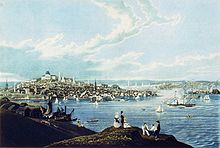
Commercial Shipping in Boston Harbor, 1835
The War Between the States (or "civil war") that North Carolina was drawn into had complex origins, but
none more important than economic. Since the beginning of the American republic, and especially with
the advent of the Industrial Revolution, the New England States demanded high tariffs to protect their
industries, which created great opposition in the agricultural (and importing) Southern States.
This opposition, at least in South Carolina, was the essence of the Nullification Crisis of 1832-33
and no doubt the opening salvo of an economic war less than twenty years later.
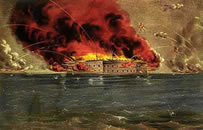
“The Cause of Lincoln’s “Civil War”
“Lincoln did not launch a military invasion of the South to free the slaves. No serious student of
history could deny this fact. In 1861 Lincoln’s position – and the position of the Republican
party – was that Southern slavery was secure: He had no intention of disturbing it; and even if
he did, it would be unconstitutional to do so. This is what he said in his First Inaugural Address.
The Republican party, led by Lincoln, was in favor of Southern slavery because its leaders feared
the spectacle of emancipated slaves residing in their own Northern States. Lincoln’s own State
of Illinois had recently amended its constitution to prohibit the emigration of black people into
the State, as had several other Northern States.
The reason Lincoln gave for launching a military invasion of the South was to “save the Union.”
Translating from his obfuscating rhetoric, this means that he wanted to use military force to
destroy once and for all the doctrines of federalism and States’ rights that had, since the
founding of the republic, frustrated ambitious politicians like himself who wanted
a highly centralized and greatly enlarged state.
[Lincoln] spent his entire twenty-eight year political career prior to becoming president
working in the trenches of the Whig and Republican parties on behalf of a more centralized
government that would dispense taxpayer subsidies to corporations and finance them with
protectionist tariffs and a nationalized banking system (the “American System”). The major
opposition to such plans, for some seventy years, had come mostly from Southern
statesmen such as Jefferson, Madison, Monroe, Jackson and Calhoun.
The war ended the constitutional logjam behind which the old Whig economic policy agenda
had languished for decades. This is most likely the real reason why Lincoln decided he had
to wage war on the South and why he rebuffed any overtures from Southern statesmen to
peaceably end the dispute. He wanted a war.”
(The Real Lincoln, Thomas DiLorenzo, Forum, 2002, pp. 257-259)
The following article “The North’s Southern Cash Cow” authored by Joseph E. Fallon of Rye, New York,
is presented with permission. A concise and easily understood explanation of the economic reasons
underlying the war of 1861, and it appeared in the June, 2013 issue of Chronicles Magazine,
“The North’s Southern Cash Cow”
“Contrary to the claims of Marxism, economics does not determine the political structure of a country;
rather, the political structure of a country determines its economic system. The Soviet Union was
proof of that. In the case of the U.S. government, this can be seen in the adoption
of tariffs, beginning in 1789. The tariffs served political objectives, not economic needs.
More often than not, they worked against the economic interests of the country as a whole. Tariffs were
adopted because Washington, Hamilton, and others believed the country’s long-term security
required the United States to be economically, as well as politically, independent from the British.
The goal of the tariff of 1789, and succeeding tariffs, was to build up local industries to supply
local needs and reduce American dependence on British manufacturers.
But as with all tariffs, somebody won, and somebody lost.
By 1861, the North was producing goods inferior to British wares and selling them to a captive
American market at higher prices. The tariffs collected on British-made goods were being
used to fund “internal improvements,” a practice known as the American System. The federal
government simply gave public funds to private companies to build the country’s infrastructure:
roads, railroads, turnpikes, harbors, and canals. These internal improvements frequently turned
out to be more expensive than originally estimated and, if ever completed, were,
like the Erie Canal, found to be redundant.
The system flourished because the politicians who voted for such federal subsidies were financially
rewarded by the businesses that received those public funds. Opponents of the practice denounced
it as institutionalized corruption. This patronage system was a boon for Northern commercial interests.
The tariff was the principal cause of the Civil War. It was the reason the South seceded --
and the reason the North waged a war against the South’s secession. It is because of the
American System that the secession of the Southern States posed an existential threat
to the Northern States. Without the revenue from Southern exports and the tariffs on
Southern imports, a union comprising the Northern States would have
constituted what today is termed a failed state.
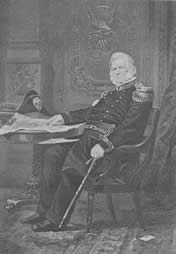
At the outbreak of the Civil War, Gen. Winfield Scott, commanding general of the U.S. Army,
opined that, without the South, the North would dissolve into three separate republics:
West Coast, Midwest, and East Coast. Initially, it appeared likely the North would, in fact,
shatter into four independent countries. Democratic Congressman Daniel Sickles and DeBow’s
Review, among others, urged New York City to secede from New York State
and become “the Republic of New York,” a city state that would flourish through free trade.
Northern newspapers reflected this fear. In an editorial on November 20, 1860,
Cleveland’s Daily National Democrat declared:
“The entire amount, in dollars and cents, of produce and of manufactured articles exported to
foreign countries from the United States for the year ending June, 1858, was $293,758,279,
of which amount the raw cotton exported alone amounted to $131,386,661. . . taking the
estimate of the cotton used [in the] North . . . and adding it to the worth of the cotton
sent abroad, and we have over one hundred and fifty-eight million dollars[’] worth of
cotton as the amount furnished by the South.
Deduct from the exports the silver and gold and the foreign goods exported, and the cotton crop
of the South alone exported exceeds the other entire export of the United States, and when to
this we add the hemp and Naval stores, sugar, rice, and tobacco, produced alone in the
Southern States, we have near two-thirds of the value entire of exports from the South.
Let the States of the South separate, and the cotton, the rice, hemp, sugar and tobacco,
now consumed in the Northern States must be purchased [from the] South, subject to a
Tariff duty, greatly enhancing their cost. The cotton factories of New England now, by getting
their raw cotton duty free, are enabled to contend with the English in the markets of their own
Provinces, and in other parts of the world. A separation would take from us this advantage,
and it would take from the vessels owned by the North the carrying trade
of the South, now mostly monopolised by them.”
On December 10, 1860, an editorial in the Daily Chicago Times affirmed that:
“With her immense staples, [the South] has furnished near three-fourths of the entire exports
of the country. Last year she furnished seventy-two per cent. Of the whole . . . It is almost impossible
to estimate the amount of money realized yearly out of the South by the North.
It, beyond all question, amounts to hundreds of millions. By the present arrangement, also, we have
a tariff that protects our manufacturers from thirty to fifty percent, and enables us to consume large
quantities of Southern cotton, and to compete in our whole home market with the skilled labor
of Europe. This operates to compel the South to pay an indirect bounty to our skilled labor,
of millions annually. The result would follow any tariff, for revenue or otherwise.”
“But,” the Daily Chicago Times continued:
“Let us, for a moment, reverse the picture, and look dissolution in the face: At one single blow
our foreign commerce must be reduced to less than one-half what it now is. Our coastwise
trade would pass into other hands. One-half of our shipping would lie idle at our wharves.
We should lose our trade with the South, with all of its immense profits. Our manufacturers
would be in utter ruin. Let the South adopt the free-trade system, or that of a tariff for revenue,
and these results would alike follow.
If protection be wholly withdrawn from our labor, it could not compete, with all the prejudices
against it, with the labor of Europe. We should be driven from the market, and millions of our
people would be compelled to go out of employment.”
In its editorial of January 15, 1861, the Philadelphia Press opined:
“It is the enforcement of the revenue laws, NOT the coercion of the State, that is the question
of the hour. If those laws cannot be enforced, the union is clearly gone.”
On March 12, 1861, the New York Evening Post wrote, “.…that either the revenue from duties
must be collected in the ports of the rebel States, or the ports must be closed to importations
from abroad, is generally admitted. If neither of these things be done, our revenue laws are
substantially repealed; the sources which supply our treasury will be dried up; we shall have
no money to carry on the government; the nation will become
bankrupt before the next crop of corn is ripe.”
The Boston Transcript wrote on March 18, 1861…..:
”now the mask has been thrown off and it is apparent that the people of the principal
seceding States are now for commercial independence. They dream that the centres
of traffic can be changed from Northern to Southern ports . . . by a revenue system
verging on free trade. . . .The government would be false to its obligations
if this state of things were not provided against.”
An editorial in the Newark Daily Advertiser on April 2, 1861, declared:
“We apprehend, that the Cotton States, especially the chief instigator of the present troubles—
South Carolina,—have all along for years been preparing the way for the adoption of the policy of free trade.”
The Pittsburgh Post wrote in its editorial on April 2, 1861:
“The argument is that by repealing the tariff, the commerce of the North may be enabled to compete
with the commerce of the South upon equal footing. Repeal the tariff and place the commercial interest
of the nations upon the same footing, and still the North would be the loser and not the gainer thereby.”
The tariff was also explicitly cited as the reason for secession in the South.
In November 1860, the Charleston Mercury declared:
“The real causes of dissatisfaction in the South with the North, are in the unjust taxation and
expenditure of the taxes by the Government of the United States, and in the revolution the North
has effected in this government from a confederated republic, to a national sectional despotism.”
The New Orleans Daily Crescent wrote on January 21, 1861, that:
“the people of the South know that it is their import trade that draws from the people’s pockets
sixty or seventy millions of dollars per annum, in the shape of duties, to be expended mainly
in the North, and in the protection and encouragement of Northern interests. . . . These are the reasons
why these people do not wish the South to secede from the Union.”
British newspapers similarly emphasized the tariff as a cause of the South’s secession.
Fraser’s Magazine, in an article entitled “The American Quarrel” (April 1861), observed that,
“Congress was rapidly passing a new tariff of the most strongest protectionism to Northern
manufacturers! . . . The unseemliness of the measure has filled all England with astonishment.
It is a new affront and wrong to the slave States, and raises a wall against the return of the seceders.”
The December 21, 1861, issue of the Athenaeum commented:
“As a rule, the great mass of the public expenditures were made from the North, not in the South,
so that Southerners found themselves doubly taxed—taxed first for the benefit of the Northern
manufacturers, and then, in the disbursement of the public funds, denied an
equal participation in the benefits accruing therefrom.”
As the North’s fear of the loss of its tariff subsidies grew, demands soon appeared for an
invasion of the South. In its editorial of May 17, 1861, the Montpelier Daily
Green Mountain Freeman advocated such action:
“Millions and tens of millions of dollars, due from Southern traders for goods of recent purchase,
and now perhaps mostly on their shelves, or due on the most sacred of honorary obligations,
have thus been, within the last three months, unblushingly repudiated, and irrevocably lost to
the mercantile classes of our cities. . . . Let the North take her pay for all her wronged
citizens in real estate, to be taken with less gentle hands than those of a levying Sheriff,
and to be settled by her free people, who will convert that land of treason and barbarism into
one of law, order, and civil society. Let those who would carp at this suggestion as too
agrarian in the treatment of the South, bear in mind that
it would be but a mild form of a just retribution. . .”
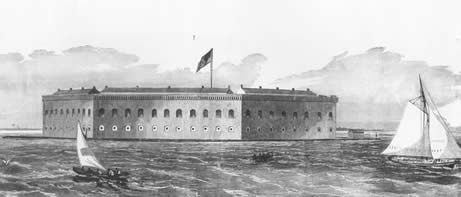
Here is where Fort Sumter in Charleston Harbor, South Carolina, entered the calculations
of the North. At the beginning of 1861, on January 19, three months before the
Battle of Fort Sumter, the Chicago Daily Tribune declared:
“There is yet a single hope for freedom in this crisis, but that hope does not rest on the North.
If the South Carolinians would only make a determined assault upon Fort Sumpter, level its
walls to the sea, and slaughter its gallant commander and all his men—then perhaps the
North would arise in vindication of the Constitution and laws, and teach the South that this
country and government were not made wholly for slaveholders. That is now almost our
only hope in vindication of the Constitution and laws.”
To what was the Chicago Daily Tribune referring?
On April 15, 1861, within 48 hours of the battle, the New York Times provided the answer:
“The first act in the drama which has terminated in the surrender of Fort Sumter,
instead of being a defeat, is, when we come to look at its effects, a most brilliant success.
It has thrown upon the Confederated States the entire responsibility of commencing the war.
It has given us time to arm for offensive operations and to collect and to place before
every Southern port a fleet sufficient to enforce the revenue laws . . .”
President-elect Abraham Lincoln would have agreed. In his letter of December 29, 1860,
to James Web, editor of the New York Courier and Enquirer, Lincoln had written:
“I think we should hold the forts, or retake them, as the case may be, and collect the revenue.”
On April 13, 1861, as the Battle of Fort Sumter was ending, Lincoln replied (citing his own
First Inaugural Address) to the concerns of a committee from the Virginia Convention:
“As I then, and therein, said, I now repeat: “The power confided to me will be used to hold,
occupy, and possess, the property, and places belonging to the Government, and to collect
the duties and imposts; but, beyond what is necessary for these objects, there will be
no invasion—no using of force against, or among the people anywhere” . . . But if, as now
appears to be true, in pursuit of a purpose to drive the United States authority from these
places, an unprovoked assault has been made upon Fort-Sumpter [sic], I shall hold myself
at liberty to repossess, if I can, like places which had been seized
before the Government was devolved upon me.”
Fulfilling the wishes of the Chicago Daily Tribune’s editorial, Lincoln wrote to Gustavus Fox on May 1, 1861:
“You and I both anticipated that the cause of the country would be advanced by making
the attempt to provision Fort-Sumpter [sic], even if it should fail; and it is no small
consolation now to feel that our anticipation is justified by the result.”
Northern States did not fight the Civil War to end slavery. They waged war upon the South to
preserve a political union, which was enriching them through tariffs, internal improvements,
and mercantilism. This goal was declared their official policy in the Crittenden-Johnson
Resolutions that the U.S. Congress adopted in July 1861:
“Resolved . . . That the present deplorable civil war has been forced upon the country by the
disunionists of the Southern States now in revolt against the constitutional Government
and in arms around the capital; that in this national emergency Congress, banishing all
feelings of mere passion or resentment, will recollect only its duty to the whole country;
that this war is not waged on our part in any spirit of oppression, nor for any purpose
of conquest or subjugation, nor purpose of overthrowing or interfering with the rights or
established institutions of those States, but to defend and maintain the supremacy of
the Constitution and to preserve the Union, with all the dignity, equality, and
rights of the several States unimpaired;
and that as soon as these objects are accomplished the war ought to cease.”
In 1862, the British Quarterly Review, in its article “The American Crisis,” put the
Crittenden-Johnson Resolutions into plain English:
“For the contest on the part of the North is now undisguisedly for empire. The question of
Slavery is thrown to the winds. There is hardly any concession in its favor that the South
could ask which the North would refuse, provided only that the seceding States would
re-enter the Union . . . Away with the pretense on the North to dignify its
cause with the name of freedom to the slave!”
In fact, to keep the Southern States in the Union, Congress passed the Corwin Amendment—
the original 13th Amendment — on March 2, 1861, which, if ratified, would have prohibited
the federal government from interfering with or abolishing the “domestic institutions” of the
Southern States. The Southern states would have none of it.
They wanted their political and economic independence. The issue was the tariff, not slavery.
“For the contest on the part of the North is now undisguisedly for empire”
How would that new order, an empire for the commercial interests of Northern States,
differ from the Union from which the Southern States had seceded?
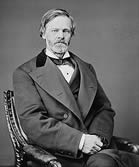
The answer was provided by U.S. Sen. John Sherman, brother of Gen. William T. Sherman
and chairman of the Senate Finance Committee. In a speech delivered in support of a bill on
monetary centralization, he proposed a new system of government that bore
a strong resemblance to 20th-century fascism:
“All private interests, all local interests, all banking interests, the interests of individuals,
everything, should be subordinate now to the interest of the Government.”
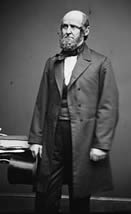
That the bill’s cosponsor in the House was U.S. Rep. Elbridge G. Spaulding, a New York banker,
confirmed “the interest of the Government” was to enrich Northern businessmen.
As Jeffrey Rogers Hummel documents in Emancipating Slaves, Enslaving Free Men:
A History of the American Civil War, Sherman’s new system enriched industrialists
and financiers such as Andrew Carnegie, J. Pierpont Morgan, and John D. Rockefeller,
as well as a host of what are today’s “leading” American families.
But much of this new wealth was acquired through fraud.
Repelled by the abuse and impelled to take action, Congress enacted the False Claims Act
(the “Lincoln Law”) on March 2, 1863, imposing penalties on companies defrauding government
programs and encouraging whistle-blowers to come forward by offering
them 15 to 25 percent of all recovered damages.
It was too little, too late. By then, corruption had been thoroughly institutionalized.
A powerful political-military-industrial complex had come into being. As Henry S. Olcott,
special investigator for the U.S. War and Navy departments, lamented in The War’s
Carnival of Fraud (1878),
“It is my deliberate conviction, based upon the inspection
of many bureaus, and the examination of some thousands of witnesses, in every
walk of life, that at least twenty, if not twenty-five percent of the entire
expenditures during the Rebellion, was tainted with fraud.”
At the same time, this new system was impoverishing Northern laborers, whose wages,
when adjusted for inflation, had fallen by one third. When, in response to such deteriorating
economic conditions, Northern workers tried to unionize and strike in Cold Springs, New York;
West Point, New York; Philadelphia, Pennsylvania; and Tioga County, Pennsylvania, Lincoln
directed the U.S. Army to suppress them, as he had directed the U.S. Army
to suppress the Confederacy and the Plains Indians.
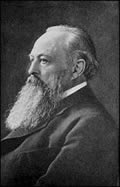
On November 4, 1866, Lord Acton wrote to Robert E. Lee:
“I saw in State Rights the only availing check upon the absolutism of the sovereign will, and
secession filled me with hope, not as the destruction but as the redemption of Democracy. . . .
Therefore I deemed that you were fighting the battles of our liberty, our progress, and our
civilization; and I mourn for the stake which was lost at Richmond more deeply than
I rejoice over that which was saved at Waterloo.”
Aftermath of Economic War
Internal Republican Struggle for Economic Dominance:
“Under Lincoln’s leadership the national government had won military control over the manpower
of the States. A national economic system based on new national banks, the nation-made
financial centers, government-subsidized railroads, and a protective tariff had grown strong
during the war…..State politics [now] revolved in the national orbit.
For both political and economic reasons the radicals were determined to circumvent Lincoln’s
program of reconstruction. Essentially Lincoln’s ten-per-cent governments – announced in
his proclamation of December 1863 and already in embryo in Tennessee and Louisiana –
would be no better to the radicals than the border States.
In Kentucky, Missouri, Maryland and Delaware the President’s handling of politics had prevented
the success of the radical program. These States had passed from Presidential pocket-boroughs,
controlled by the army, into conservative – almost Democratic hands. The extension of a
conciliatory border-State policy into the conquered area might well ensure the dominance of the
moderate wing of the Republican party.
Moreover, such an outcome would effectively prevent Northern economic penetration of the South.
Railroads would not bring profits to Northern capitalists, cotton would not seek Northern looms,
and banks would not beg Northern credit.
Instead, a moderate [postwar] South, its politics controlled by ten per cent dependent on
Lincoln’s patronage and directed by his army, might well combine with the border States
to overthrow the [radical sponsored] national banks, reduce the wartime tariff, and pay
the war-born national debt in greenbacks.
The terrifying prospect of having the “results of the war” torn from their grasp impelled
the radicals to a battle that, beginning early in 1865, was to rage with increasing
intensity against President Andrew Johnson.”
(Lincoln and the War Governors, William B. Hesseltine, Alfred A. Knopf, 1948, pp. 385, 392-393)
Copyright 2013, the North Carolina War Between the States Sesquicentennial Commission